
The Buffalo Bisons are a Minor League Baseball team of the International League and the Triple-A affiliate of the Toronto Blue Jays. Located in Buffalo, New York, the team plays their home games at Sahlen Field, the highest-capacity Triple-A ballpark in the United States.
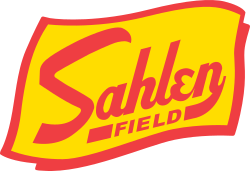
Sahlen Field is a baseball park in Buffalo, New York, United States. Originally known as Pilot Field, the venue has since been named Downtown Ballpark, North AmeriCare Park, Dunn Tire Park, and Coca-Cola Field. Home to the Buffalo Bisons of the International League, it opened on April 14, 1988, and can seat up to 16,600 people, making it the highest-capacity Triple-A ballpark in the United States. It replaced the Bisons' former home, War Memorial Stadium, where the team played from 1979 to 1987.
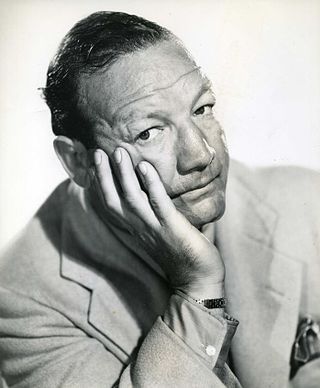
Max Everitt Rosenbloom was an American professional boxer, actor, and television personality. Nicknamed "Slapsie Maxie", he was inducted into The Ring's Boxing Hall of Fame in 1972, the International Jewish Sports Hall of Fame in 1984, the World Boxing Hall of Fame in 1985, and the International Boxing Hall of Fame in 1993. He was sometimes billed as Slapsie Maxie Rosenbloom for film appearances.
The Negro American League was one of the several Negro leagues created during the time organized American baseball was segregated. The league was established in 1937, and disbanded after its 1962 season.
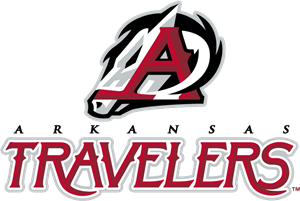
The Arkansas Travelers, also known informally as The Travs, are a Minor League Baseball team based in North Little Rock, Arkansas. The Travelers are affiliated with the Seattle Mariners as members of the Texas League.
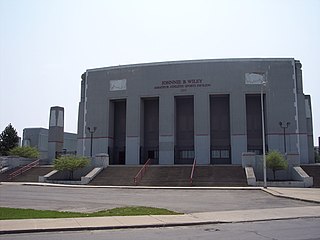
War Memorial Stadium, colloquially known as The Rockpile, was an outdoor football, baseball and soccer stadium in Buffalo, New York. Opened in 1937 as Roesch Memorial Stadium, the venue was later known as Grover Cleveland Stadium and Civic Stadium. The stadium was home to the Canisius Golden Griffins (NCAA), Buffalo Indians-Tigers (AFL), Buffalo Bills (AAFC), Buffalo Bulls (NCAA), Buffalo Bills (AFL/NFL), Buffalo Bisons (IL), Buffalo White Eagles (ECPSL), Buffalo Blazers (NSL), Buffalo Bisons (EL/AA) and Canisius Golden Griffins (NCAA). It also had a race track and hosted several NASCAR events. The venue was demolished in 1989 and replaced with the Johnnie B. Wiley Amateur Athletic Sports Pavilion, which retains entrances from the original stadium.
Olympic Park is the name shared by two former baseball grounds located in Buffalo, New York, United States.
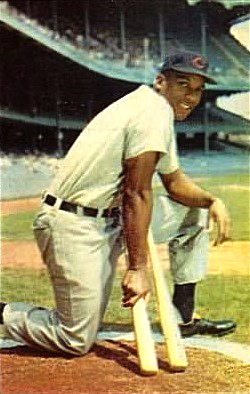
Luscious"Luke"Easter was a professional baseball player in Major League Baseball and the Negro leagues. He batted left-handed, threw right-handed, was 6 ft 4 in (1.93 m), and weighed 240 lb.

The International League (IL) is a Minor League Baseball league that operates in the United States. Along with the Pacific Coast League, it is one of two leagues playing at the Triple-A level, which is one grade below Major League Baseball (MLB).

James Edward Slattery was an American professional boxer in the light heavyweight division. He was inducted into the Greater Buffalo Sports Hall of Fame in 1992, Buffalo Veteran Boxers Association Ring #44 in 1997 and the International Boxing Hall of Fame in 2006.
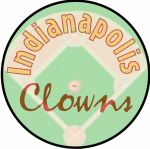
The Indianapolis Clowns were a professional baseball team in the Negro American League. Tracing their origins back to the 1930s, the Clowns were the last of the Negro league teams to disband, continuing to play exhibition games into the 1980s. They began play as the independent Ethiopian Clowns, joined the Negro American League as the Cincinnati Clowns and, after a couple of years, relocated to Indianapolis. Hank Aaron was a Clown for a short period, and the Clowns were also one of the first professional baseball teams to hire a female player.
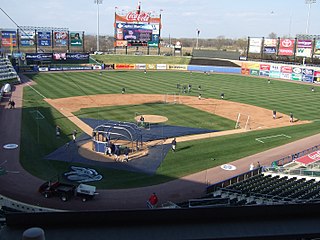
Triple-A has been the highest level of play in Minor League Baseball in the United States since 1946. Currently, two leagues operate at the Triple-A level, the International League (IL) and the Pacific Coast League (PCL). There are 30 teams, one per each Major League Baseball (MLB) franchise, with 20 in the IL and 10 in the PCL. Triple-A teams are generally located in smaller cities as well as larger metropolitan areas without MLB teams, such as Austin, Jacksonville, Columbus, and Indianapolis. Four Triple-A teams play in the same metro areas as their parent clubs.
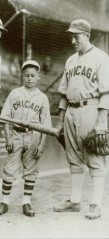
Clyde Ellsworth "Buck" Crouse was an American catcher in Major League Baseball.

Oliver Angelo Carnegie was an Italian American professional baseball player whose playing career spanned 15 seasons. Over that time, Carnegie played in the minor leagues with the Class-B Flint Vehicles (1922) of the Michigan–Ontario League; the Class-B Hazleton Mountaineers (1931) of the New York–Penn League; the Double-A Buffalo Bisons of the International League; and the Class-D Lockport White Sox (1942) and the Class-D Jamestown Falcons (1944) of the Pennsylvania–Ontario–New York League. In 1,539 career games played, Carnegie batted .309 with 1665 hits, 302 doubles, 48 triples and 297 home runs. Carnegie batted and threw right-handed. Carnegie also managed the Class-D Jamestown Falcons in 1944. Officially a player-manager since he also played 96 games that season, Carnegie led the Falcons to a 70–54 record which was good enough for second overall in the PONY League.
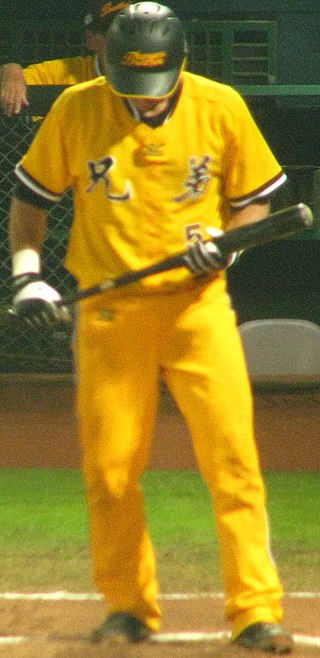
James William Negrych is an American professional baseball infielder for the Chinatrust Brother Elephants of the Chinese Professional Baseball League (CPBL).

The North Dakota State Bison baseball team is the varsity intercollegiate baseball program of North Dakota State Bison in Fargo, North Dakota, United States. The program's first season was in 1909, and it has been a member of the NCAA Division I Summit League since the start of the 2008 season. Its home venue is Newman Outdoor Field, located on North Dakota State's campus. Tyler Oakes is the team's head coach in his second season. The program has appeared in 2 NCAA tournaments. It has won 5 conference tournament championships and 2 regular season conference titles. As of the start of the 2023 Major League Baseball season, 2 former Bison have appeared in Major League Baseball and 4 have appeared in Minor League Baseball.

Buffalo, New York and its greater metropolitan area is currently home to two major league sports teams. The Buffalo Sabres play in the City of Buffalo, and the Buffalo Bills play in the suburb of Orchard Park. Buffalo is also home to several other major and minor league sports teams, including the Buffalo Bisons, Buffalo Bandits and FC Buffalo. Several local colleges and universities are active in college athletics, including Canisius College, Niagara University and The State University of New York at Buffalo at the NCAA Division I level. Buffalo was host city for the 1993 World University Games, for which Burt Flickinger Center and University at Buffalo Stadium were built.


















